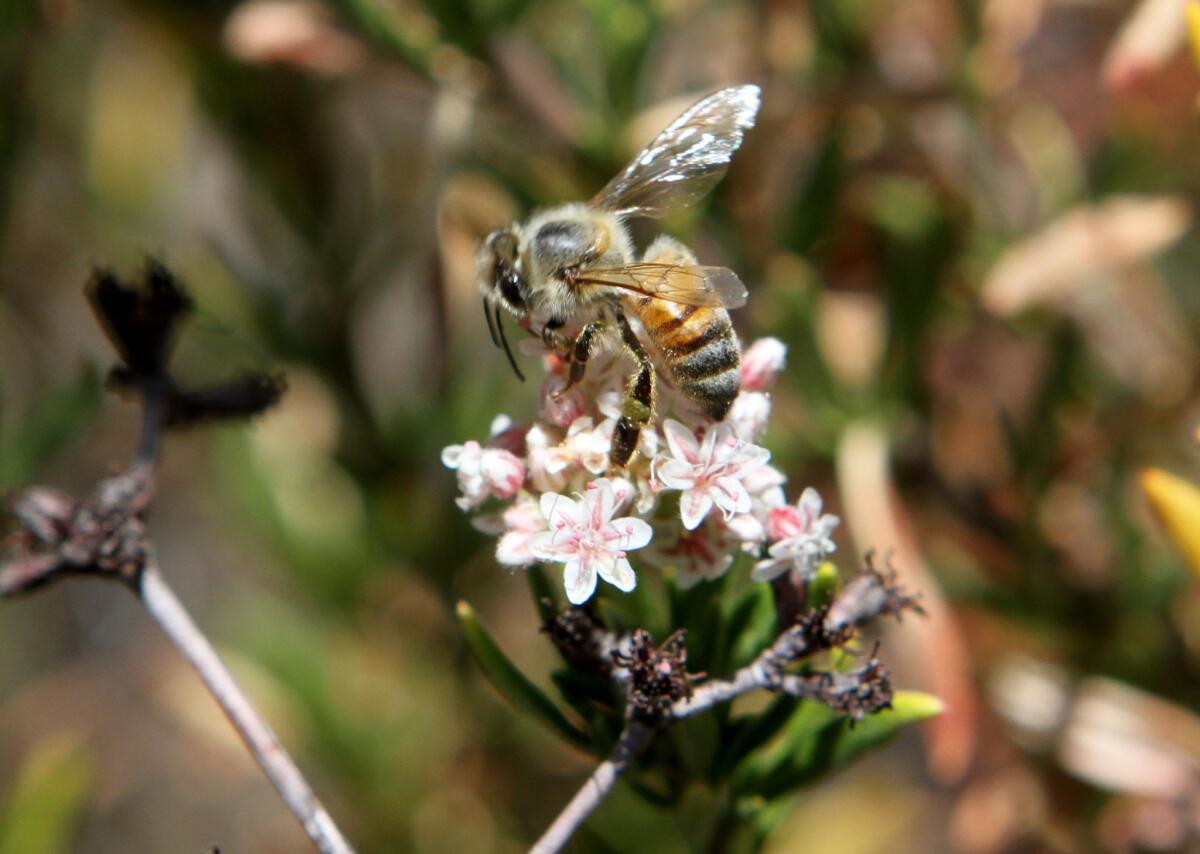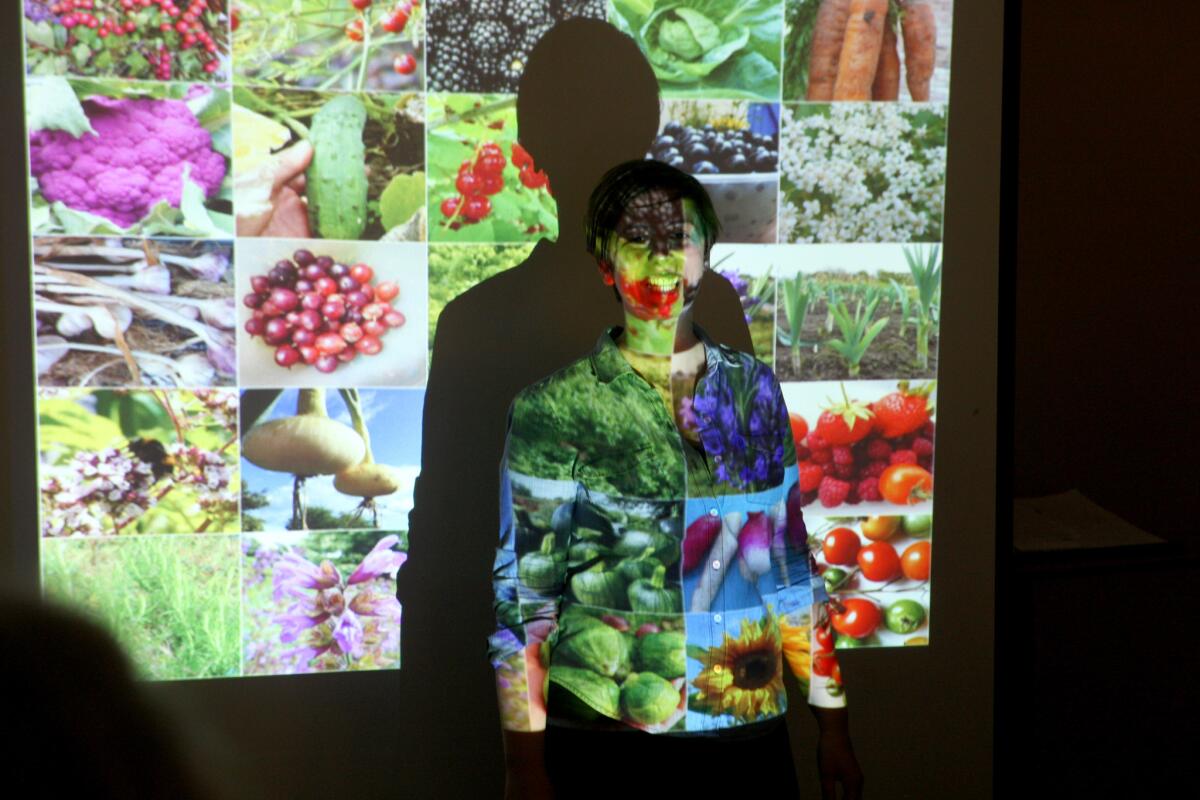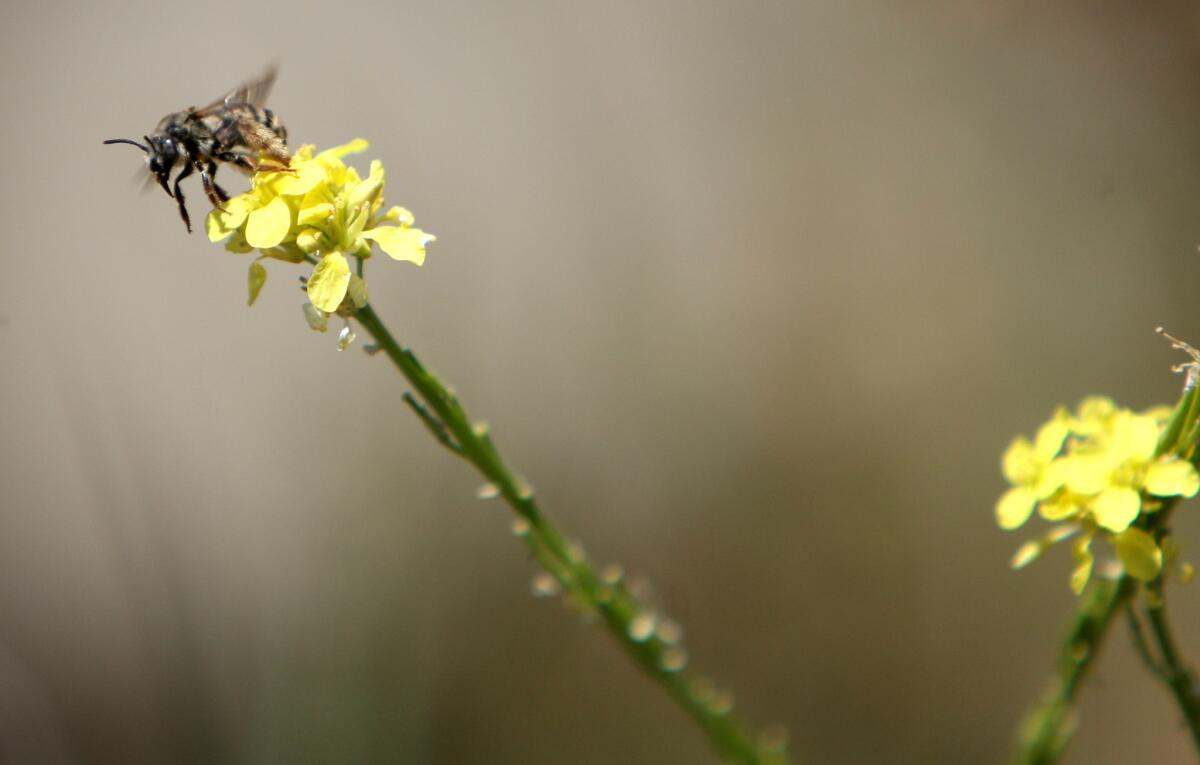‘Our lives depend on them’: Program stresses importance of native bees

A bee lands on a flower at Deukmejian Wilderness Park in Glendale.
About 75% of vegetables, fruits and nuts are pollinated by bees, including tomatoes, potatoes and eggplant, which specifically rely on buzz pollination.
That was one of the facts attendees learned during a program about native bees in Southern California at Deukmejian Wilderness Park on Saturday morning.
“SoCal is buzzing with native bees, and our lives depend on them,” said Michelle Rivers, a bee enthusiast and ecologist originally from the United Kingdom, as she launched into a slide show about bee identification, anatomy, social behavior and the impact of their presence on human lives and the environment.
Of the 20,000 species of bees worldwide, 4,000 call North America home, Rivers said, and 600 species are in Southern California because of its diverse terrain and environment.
Rivers identified some of the definitive qualities of bees, including their size and bristle-like hairs, which are used to help collect pollen in the “baskets” on their hind legs.

Ecologist Michelle Rivers talks about the importance of bees to human life as part of the Native Bees of Southern California program at Deukmejian Wilderness Park in Glendale on Saturday, July 9, 2016.
Bees also have five eyes — two compound eyes, which each have thousands of individual lenses, and three additional simple eyes, which are located in the center of their heads.
“Bees eat only nectar for its sugars and carbohydrates and pollen for its proteins, vitamins and minerals.” Rivers said.
“The most amazing things about bees is the buzz pollination or sonication. It’s amazing that you can hit a tuning fork and hit a middle C and make the pollen come out of a plant so bees can get to it.” said Jim Bloch, a Santa Clarita resident and docent at the Placerita Canyon Nature Center.
The buzzing sound commonly associated with bees is actually a technique of buzz pollination, which certain bees, such as bumblebees, use on flowers which have less-accessible pollen. The bee moves its wings so rapidly that it creates a vibration in either the note of A or C and causes the flower to release its pollen.
Rivers explained that despite the abundance of honeybees worldwide, they do not use buzz pollination, so it’s especially important to preserve native bees.
In the past 100 years, 50% of native bees have disappeared in the United States.
“Bees go where flowering plants go,” Rivers said, but climate change and the use of harmful pesticides have both contributed to habitat loss and the decline of native bees.
Rivers said there are several ways to help preserve native bees.
“Provide food. We don’t have to create reserves to support our native bees. If everyone provided food, in terms of planting native or nonnative plants that are good for bees in our yards, if we did that en masse, that would certainly help with the habitat-loss problems.” Rivers said.

A native bee searches for nectar at Deukmejian Wilderness Park in Glendale.
Other ways include spreading awareness, avoiding use of harmful garden pesticides, buying bee-pollinated foods and providing a bee hotel, an artificial nesting site which allows bees to build nests and reproduce.
The information provided during the presentation surprised some attendees.
“I didn’t know anything about bees, and when I told people that I was coming to see a thing about native bees, they said, ‘There’s no native bees anymore; the honey bees pushed them away.’ So this has been a great education for me,” said La Crescenta resident Mike Lawler. “Now, I’ll be looking closer at plants when I go hiking and looking at different kinds of bees that are out there. And I think we’re going to put up a little bee hotel.”
After Rivers’ presentation, the group went on a hike in the wilderness park. They didn’t have to walk far before Rivers found, identified and captured several different species of bees in nearby bushes, brush and trees.
Not all bees are social, using hives with other bees. They can be solitary, which make up the vast majority of all bee species.
“I had no idea there were solitary bees; that was the big ‘ah-ha’ to take away from this,” Lawler said. “So now when I see bees out in the wild, I realize not all are of them going back to a big hive. Some are going back to their little individual nest to set something up for their eggs.”
Toy is a contributor to Times Community News.